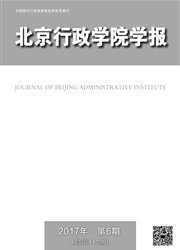

 中文摘要:
中文摘要:
泛珠三角区域合作十多年来从概念构想、制度安排到机制设计,取得了显著的成效。透过威廉姆森制度演化的四个层次分析框架及其相互关系,可发现泛珠三角区域合作的制度演化中在第一层次的非正式制度方面泛珠三角区域各具特色但交融影响;宪法和法律等第二层次的制度为其合作提供了基本的制度环境;第三层次的日趋完善治理机制有效推进了泛珠三角的区域治理;而作为资源配置机制使各个领域的合作取得实质性的进展,且不同层次之间的制度演化互动明显,形成区域合作的制度体系。未来推进区域合作的深入在嵌入性制度层面需要加强民间的交流与融合,在制度环境方面要融入国家区域发展战略和加强区域合作的法制建设,在治理机制方面要健全合作架构和完善省际合作机制,在资源配置方面要制定泛珠三角区域合作的规划、实施和评估方案。
 英文摘要:
英文摘要:
The Pan-Pearl River Delta Regional cooperation has made remarkable achievement over a decade. By introducing Williamson’s analysis framework concerning the four levels of system development and their mutual relationship, this paper analyzes the process of system development of Pan-Pearl River Delta regional cooperation. At the first level, informal institutions of Pan-Pearl River Delta Regions have distinctive characteristics but have an influence on each other; at the second level, institutions, such as the constitution and laws, provide the basic environment for the cooperation; at the third level, the gradually improved governance mechanism effectively promotes the Pan-Pearl River Delta Regional governance. The mechanism of resource allocation makes a substantive progress in all areas of cooperation. The interaction of system development at different levels becomes more obvious and forms the institutional system of regional cooperation. In the future, the people-to-people communication and integration should be enhanced in embedded system for further promoting regional cooperation. The institutional environment should be integrated into the state’s regional development strategy and legal development of regional cooperation should be strengthened. In terms of governance mechanism, the cooperation framework and the mechanism of the provincial cooperation should be improved. The scheme of planning, implementation and evaluation concerning the Pan-Pearl River Delta Regional cooperation should be worked out.
 同期刊论文项目
同期刊论文项目
 同项目期刊论文
同项目期刊论文
 期刊信息
期刊信息
